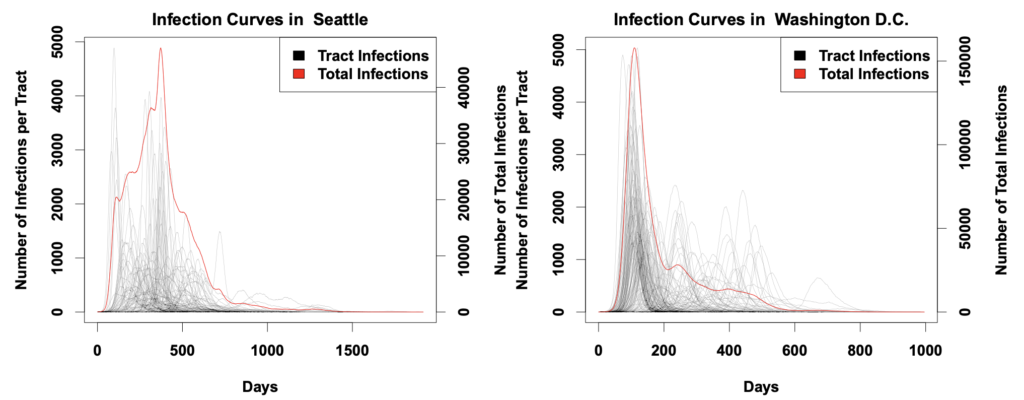Two students at Duke University, Anna Ziff and Robert Ziff, analyzed data from the COVID-19 pandemic worldwide to learn about “fractal kinetics”. Kinetics refers to the study of the rates of chemical reactions, and fractal refers to an underlying structure of an entity. In this context, the entity is a network representing the rate of spread of COVID-19. This article discusses the relation of power-law kinetics to COVID-19’s growth. The figure below shows 2 different plots of the same data, showing how the death rate increases at different rates during an epidemic.

Epidemics usually grow exponentially based on a fixed rate. However, with COVID-19, it was observed that the spread of the virus increased in 2 parts, followed by an exponential drop-off. The 2 increasing parts include:
- Initially starting off exponentially
- Transforming into a Power Law
Recently, we have studied power laws in class, which are a distribution. We emphasized the long-tail nature of these distributions and the applications of them in the real world.
Back to the study, the students attributed the spread of COVID-19 to a small world network. This is another topic we have delved into in class where we looked at the high concentration of shorter paths in social networks. This concept is highlighted by the Small-World study conducted by Stanley Milgram. Albert-László Barabási, a professor at Northeastern University researches the Small World Phenomenon. The article refers to Barabási’s book which looks into networks of infectious diseases. These networks are not random but are scale-free, as random networks would indicate exponential growth. In class, we looked into scale-free networks which are networks with a power-law tail in its degree distribution. Here, people have lots of local neighbours and few long-range connections. Barabási claims they follow a power law and have a long-tail as connectedness between people dwindles. This does not represent how fast a virus moves but shows that there are groupings, or hubs, that promote the spread.
The students from Duke use these models to make claims about the speed of the spread and of deaths due to the virus. After one individual is infected, the people in their network interact with them less as they find out they are sick, to try and prevent spread of the infection. Over the period of time the individual is sick, their local network will slowly dissipate as more people find out that they are sick, reducing the rate of infection so it is not exponential anymore. These models are used to make predictions about the number of deaths, and fortunately, the actual death rate has been slower than predicted. If the death rate was still growing exponentially, the mortality count would be much higher. Deviations above the power law indicate that society is doing poorly to contain the spread, whereas deviations below signify that society is doing better than expected.
It is really intriguing to see how graph theory and graph structure can be used to represent the spread and death rate of an epidemic, such as the COVID-19 virus we are currently experiencing.
